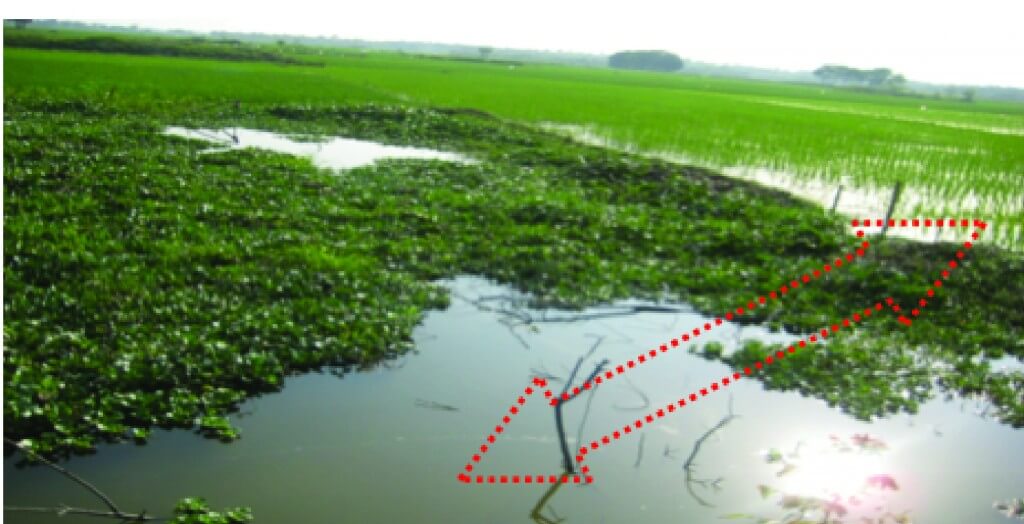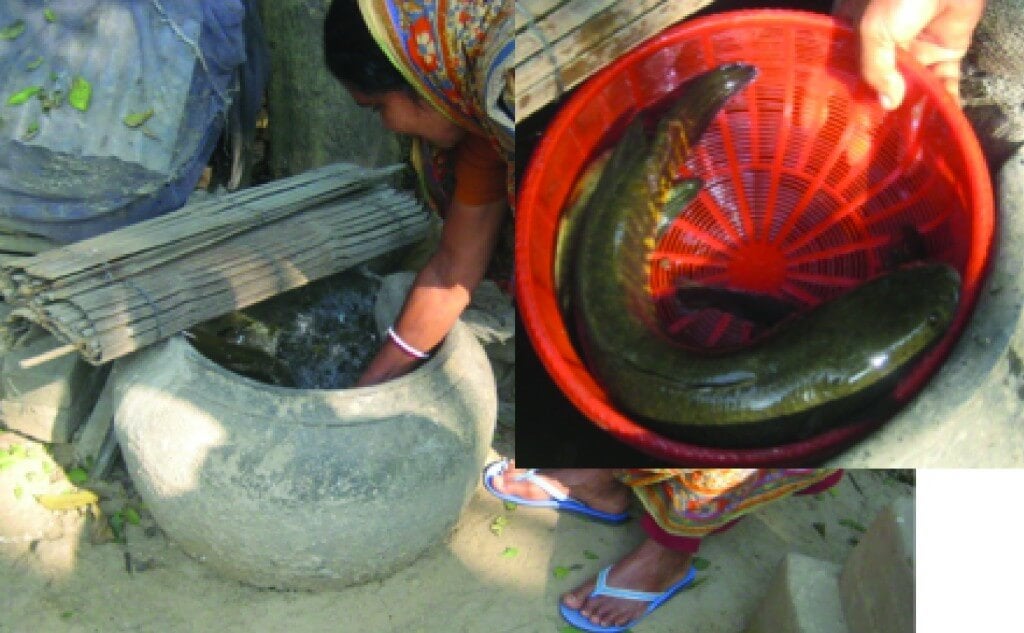This article originally appeared on the Landscapes for People, Food and Nature website.
Flood control measures do more harm than good for local fishers
Bangladesh is a watershed-based country with dynamic ecosystems—including floodplains and wetlands—that are experiencing biodiversity losses and degradation. Since the 1970s, the government of Bangladesh has encouraged the draining of wetlands and established embankments to protect farmlands and houses from devastating floods. This crop-focused development has destroyed much of the inland fisheries, which in turn affect subsistence fishing for millions of rural families that rely heavily on this affordable source of protein and income. It is believed that the traditional fishers, known locally as jaladash (water slaves), are born for fishing and cannot do other professions because of this cultural obligation placed upon them. Thus, these anti-flood measures have caused a great deal of trouble for these communities, more so than any other rural families. Many migrate for better opportunities. Those who do not migrate face extreme poverty with little support from the government.
Community-based solutions ease strain on wetlands and livelihoods
The Goakhola Floodplain, located in the Narail District of Southern Bangladesh, is one of hundreds of degraded wetlands in the county where river embankments have been altered to accommodate variable flooding patterns. The loss of fisher incomes in this floodplain is staggering. Starting in the 1990s, with technical support from WorldFish, funding from the U.K. government and partnerships with the Bangladesh Department of Fisheries and a local NGO called Baste Shekha, villagers in these human-altered ecosystems organized to introduce innovative solutions to the fisheries crisis. Fishers and farmers of the Goakhola Floodplains agree that going back to non-embanked fishing alongside the same lands used for farming is impossible. Massive stock-based fisheries are also not an option for financial and social reasons. The only option they have is using ditches as reserves for parent stocks. It is their hope that these solutions will be exemplary for many floodplain-based livelihoods of Asia and Africa as well.

The traditional fishermen using this approach only fish for two to three months a year, using their seine nets during the monsoon. To keep the fishery systems healthy, they apply strategies that have social-ecological benefits. For example, each season the fish ditches are dewatered and extra vegetation is removed to allow enough space for parent stocks to be saved for the following year. During summers, the Goakhola Floodplain is dry except the ditches and ponds, where all the fish gather to survive these harsh months. Less availability of water during winter and summer months increases concerns of predation on small fish like minnows, which fishermen avoid by removing predators such as snakeheads. The remaining fish are free to leave the ditches and return to the floodplains that are rich in natural foods during the monsoon months (June–September). They also breed during the monsoons and come back with new cohorts of fish to the same ditches in winter months. Water from the ditches is also applied to rice fields when accessible to provide extra irrigation and nutrients.As opposed to many popular rice-fish systems that often rely on stocked fish like carp, the Goakhola community saves native stocks in ponds/ditches on lands protected by embankments. Fish stocks are mixed, consisting of local minnows, small shrimp, snake heads, climbing perches and local catfishes like Tengra macch. The perch and catfish are almost non-existent in open water fisheries including floodplains.
In such fishery systems, a conventional no-take approach—as we see with many fortress-style biodiversity conservation programs—is not effective, as these jaladash communities need to support their livelihoods. Rather, these ditch fisheries are sustainably managed with rotational fishing practices. For example, stocks from three of nine ditches are harvested, while the rest are saved for fish to reach their full size and maintain breeding populations (approximately three years). The fishermen earn around the equivalent of USD $800–1200 a year, which they distribute among their participating members. These earnings are low for the 40 members of the community-based association for floodplain management, but the profit is often invested in their low-interest, high recovery microcredit program. Additionally, the fishermen do not sell to outside buyers if those buyers will resell to a local market.
Successful adaptations are possible in human-altered landscapes
In another unusual conservation and livelihoods approach, fish are kept in porous mud pots (Kolshi or Bhar) that act like a cooler during summer months when ditch water levels are low and often contain high levels of fish waste along with rotten aquatic plants that pollute the waters. Hardy fish like shole (Channa stariatus) and shing/jial (Heteropneustes fossilis) are kept in these pots to keep them fresh for days before market. The unavailability of permanent bodies of water due to drained wetlands makes these fish very rare in market places, and they often fetch a high market price.

In a state of climate change where droughts threaten wetlands, this innovative rice-fish-conservation approach builds strong social-ecological ties in human altered floodplains that encourage viable livelihoods and sustainable resource use. This practice in Goakhola provides hope for the fishing communities and rice farmers that may be replicated in other parts of the world where adaptation to climate change is needed.
Md. Abdullah Al Mamun holds a Ph.D. in Geography and Environmental Studies from Wilfrid Laurier University in Waterloo, Canada, and has more than 12 years of work experience as a biologist, ecologist, aquaculturist and natural resources management professional in Canada and Southeast Asia.